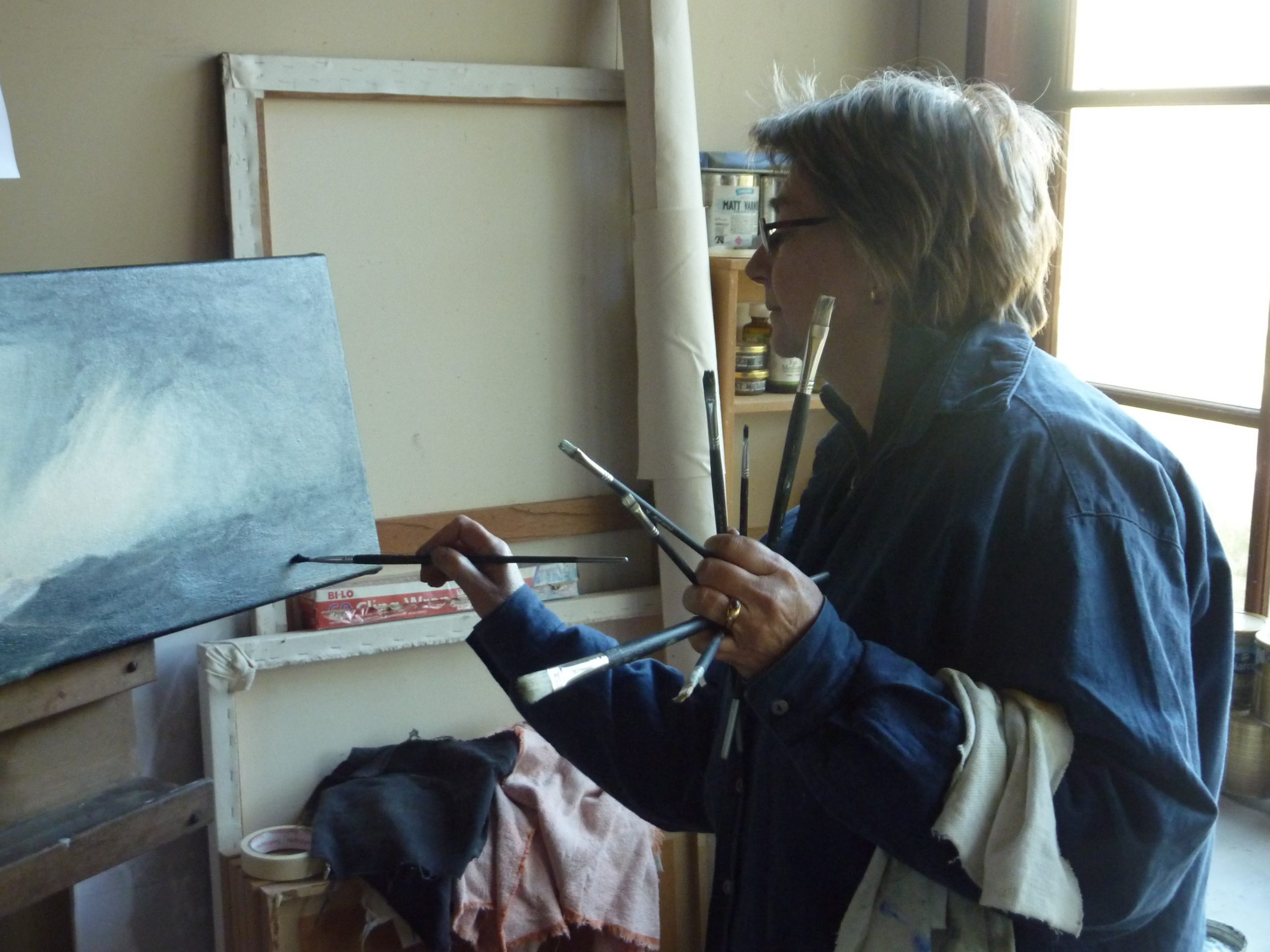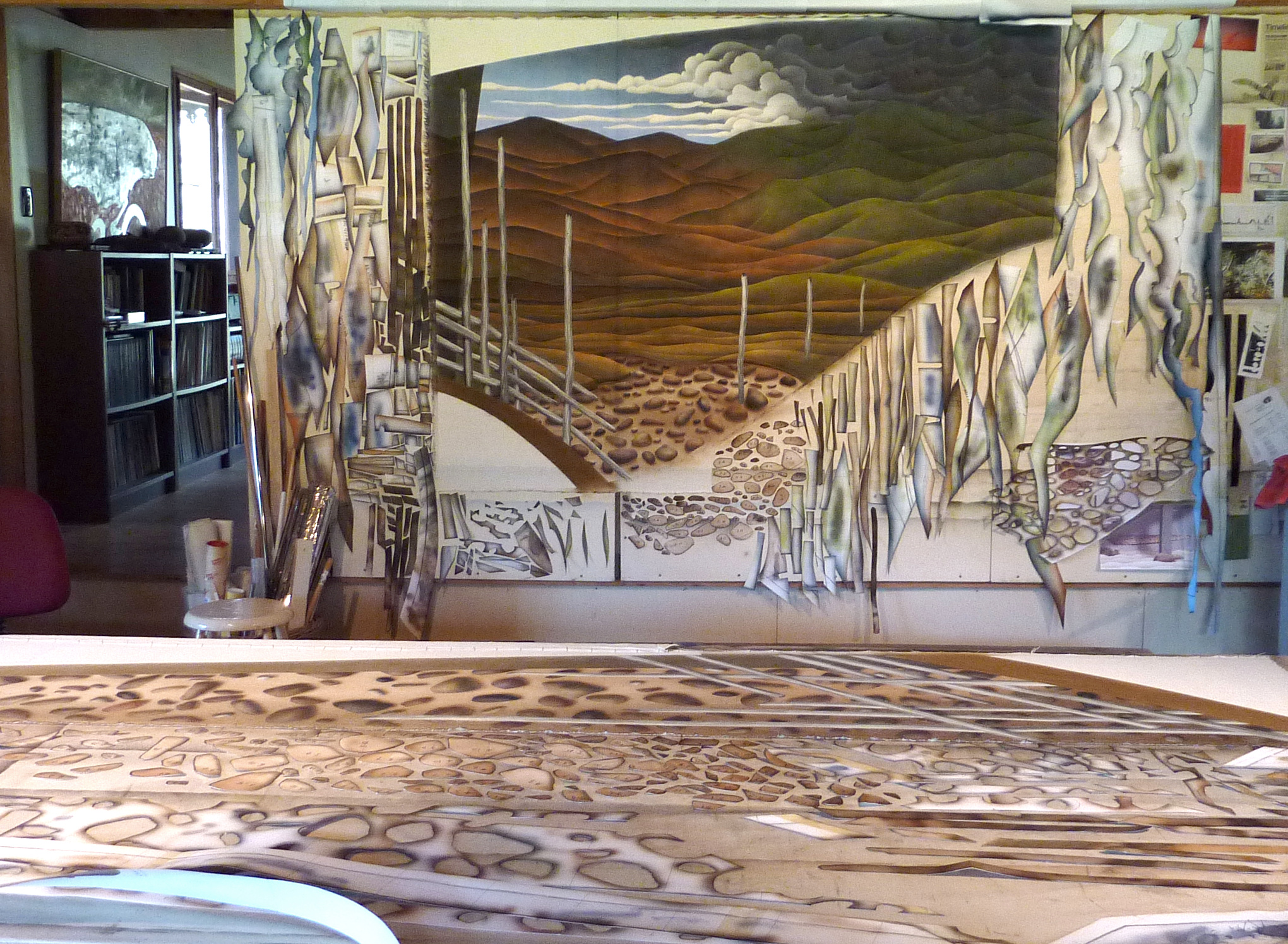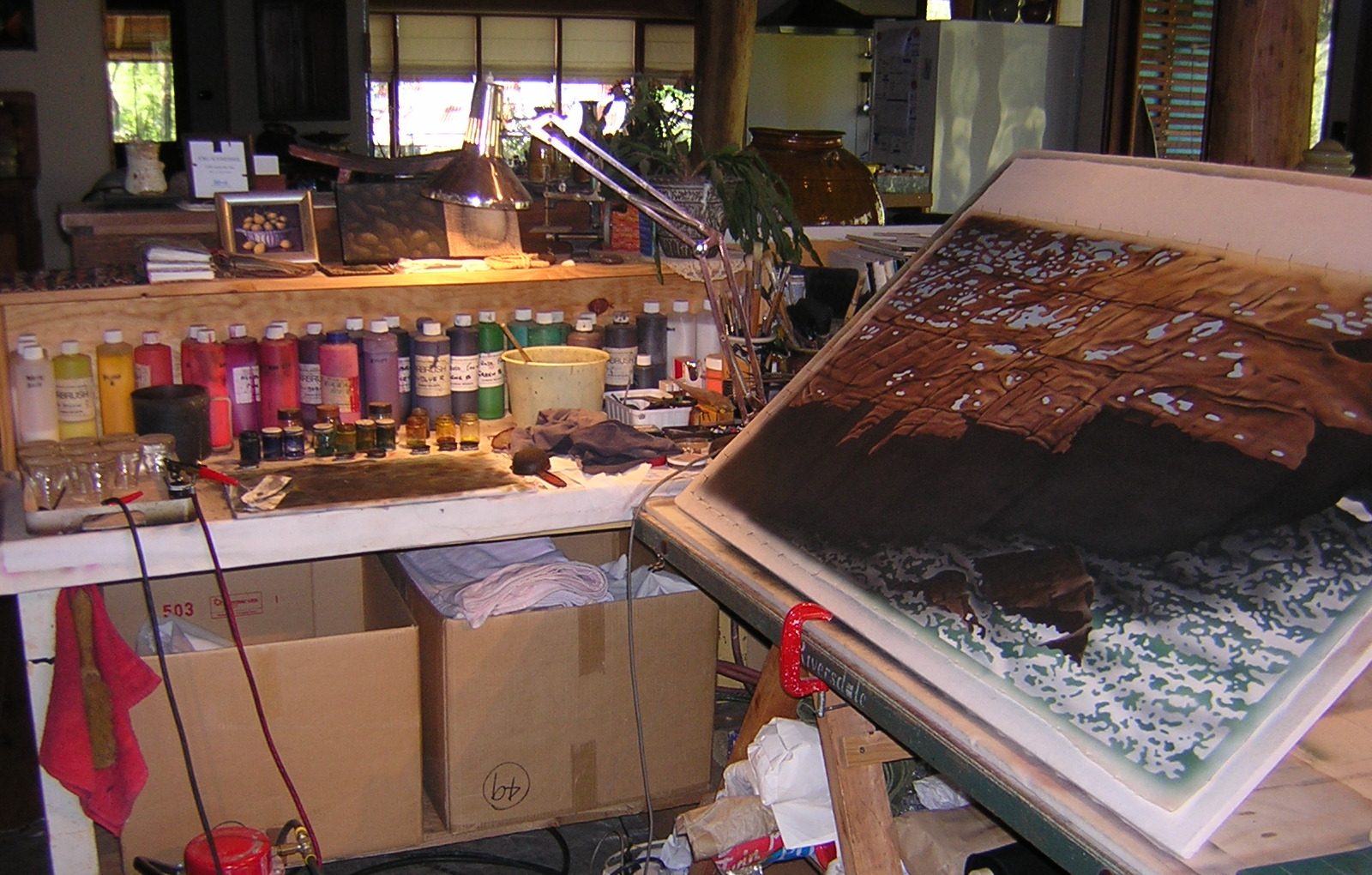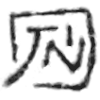GOANNA RIDGE

1995 - Current
My husband, woodfire potter — Chester Nealie — and I live and work on our rural property near Gulgong in New South Wales, Australia. Named “Goanna Ridge” after the numerous goannas here, the property is also home to other Australian native animals and birds.
The land is largely natural bush with rocky gullies and outcrops covered in lichens and hardy mosses. We built our house to include studio space, with Chester’s kilns on the ridge nearby. He specialised in anagama-style pots which show the rich colours and textures of wood-firing.
PROCESS

I use personal response and experience as a starting point in my work, sometimes as sketches, as photographs or a combination of source materials. I play with these to explore compositional possibilities and work from a roughly captured concept as a basis for developing the image.
Paintings

Working with paint on canvas reflects a shift in my practice. In my previous work I established the image by airbrushing acrylic pigment onto cloth. This usually involved a lot of preliminary work to create stencils, then to build layers of colour in a translucent medium. All this required a great deal of forethought with limited opportunity to make changes and process was an important consideration.
When I returned to studio work after a long project elsewhere, I found my focus was directed at making images and process, so enjoyed in earlier years, no longer had my interest. I picked up brushes instead.
I like the direct contact with colour to canvas, the immediacy of building and adjusting the image. I bring an awareness from studying past masters and other painters into my compositions and am currently working on a series from field trips to familiar coastal locations.
Art Textiles
In my art textiles work fabric was stretched and pinned ready for airbrushing. I used an acrylic pigment and ‘painted’ the image with a combination of a free-moving airbrushing style and a variety of stencil controls.

When colour had been applied, the pigment was ‘set’ through heat and evaporation. The dyed image was layered with a backing cloth and a filling layer of wool, trimmed and edges finished ready for fixing to the front and back rollers of my stitching frame.
Hand stitching followed a deliberate strategy to add line, movement and emphasis to each composition. Every stitch through layers indents the fabric surface which can vary depending on the tension of the thread. The accumulation of these indentations gives greater strength to the fabric and produces an enticing texture over the whole surface, adding depth to the image in the work.

Viewed from the front, the surface shows the interplay of ambient light. Stitches perform as strokes of line and the rhythm of rows builds to a sense of flow and movement.
Looking across the work at an angle it’s possible to see how the overall stitching creates an accumulated texture akin to windblown dune sands or reminiscent of stipple work in antique quilts. If you take time to look at an acute angle across the work you can see how this undulation of surface texture takes on a sense of tessellation as the fabric absorbs or reflects light.
I like to stitch across the entire surface of my work because of the textural interest it creates. This effect can be seen even in my small pieces but can be quite spectacular in the larger work.
Workshops
I have given workshops and lectures over many years.
Subjects have included exhibition design and installation, professional practice for craft artists, my own work both in dye technique and stitching, and design and composition. Many of these workshops have been in the context of Summer Schools, Fibre Forums and regional workshops.
I have also accepted students for In-Studio workshops which offered a closer tuition, responding directly to areas of interest and enquiry.


